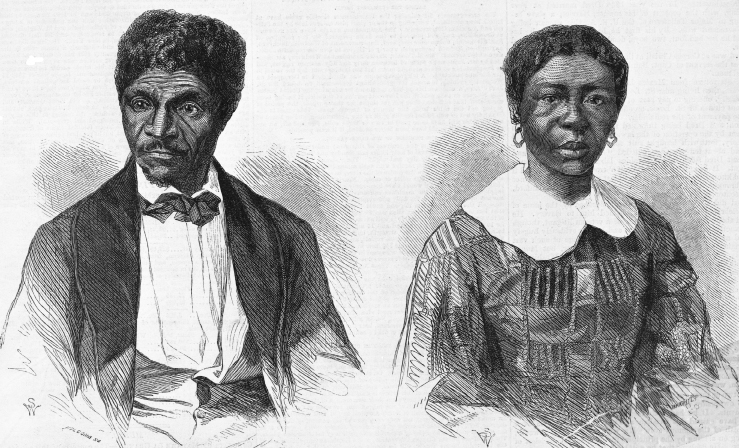Exploring American Histories: Printed Page 378
Exploring American Histories, Value Edition: Printed Page 314
The Dred Scott Decision

Just two days after Buchanan’s inauguration, the Supreme Court finally announced its decision in the Dred Scott case. Led by Chief Justice Roger Taney, a proslavery Southerner, the majority ruled that a slave was not a citizen and therefore could not sue in court. Indeed, Taney claimed that black men had no rights that a white man was bound to respect. The ruling annulled Scott’s suit and meant that he and his wife remained enslaved. But the ruling went further. The Dred Scott decision declared that Congress had no constitutional authority to exclude slavery from any territory, thereby nullifying the Missouri Compromise and any future effort to restrict slavery’s expansion. Buchanan was happy to have the fate of slavery taken out of the hands of Congress, hoping it would alleviate sectional tensions. His hopes proved unfounded. Instead of quieting the debate over slavery, the ruling further outraged many Northerners, who were now convinced that a Slave Power conspiracy had taken hold of the federal government.
In 1858, when Stephen Douglas faced reelection to the U.S. Senate, the Republican Party nominated Abraham Lincoln to oppose him. The candidates participated in seven debates in which they explained their positions on slavery in the wake of the Dred Scott decision. Pointing to the landmark ruling, Lincoln asked Douglas how he could favor popular sovereignty, which allowed residents to keep slavery out of a territory, and yet support the Dred Scott decision, which protected slavery in all territories. Douglas devised a clever response, known as the Freeport Doctrine. He claimed that if residents did not adopt local legislation to protect slave-holders’ property, they could thereby exclude slavery for all practical purposes. At the same time, he accused Lincoln of advocating “negro equality,” a position that went well beyond his opponent’s views. Lincoln did support economic opportunity for free blacks, but not political or social equality. Still, the Republican candidate did declare that “this government cannot endure permanently half slave and half free. . . . It will become all one thing or all the other.”
The Lincoln-Douglas debates attracted national attention, but the Illinois legislature selected the state’s senator. Narrowly controlled by Democrats, it returned Douglas to Washington. Although the senator retained his seat, he was chastened by how far the Democratic Party had tilted toward the South. So when President Buchanan tried to push the Lecompton Constitution through Congress, legitimating the proslavery government in Kansas, Douglas opposed him. The two struggled over control of the party, with Douglas winning a symbolic victory in January 1861 when Kansas was admitted as a free state. By then, however, the Democratic Party had split into southern and northern wings, and the nation was on the verge of civil war.
Review & Relate
|
What factors contributed to the spread of antislavery sentiment in the North beyond committed abolitionists? |
How did the violence in Kansas in the mid-1850s reflect and intensify the growing sectional divide within the nation? |